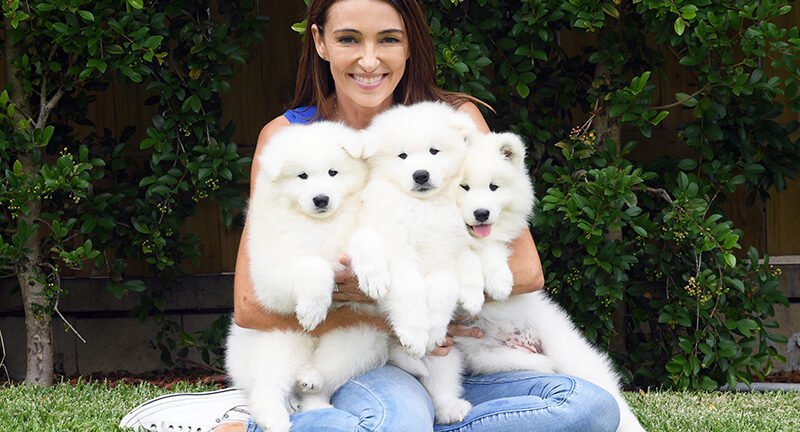April 18, 2021

Separation Anxiety with Dr Katrina Warren
Wondering how to deal with separation anxiety in a post-pandemic world? We’ve been speaking with veterinarian and TV personality, Dr Katrina Warren, who has partnered with PetSafe®Australia, to get the inside scoop on how owners can tackle this issue. If your pet’s struggling to adjust to less time with you around, read on for expert advice.
What is Separation Anxiety?
In dogs, separation anxiety manifests as signs of stress like behavioural changes when they are isolated from their owners.
“Any animal that bonds closely to a human can experience anxiety when they are suddenly separated,” shares Dr Katrina. “However, dogs bond very closely to humans and seem to suffer the most.”
How can I tell my dog has Separation Anxiety?
Dr Katrina says that owners should be able to spot any behavioural changes in the lead up to their departure, “Often these behaviours are triggered by something in the owner’s routine such as picking up keys or putting on shoes.”
As you get ready to leave, try to watch for tell-tale signs. You may notice trembling, salivating, refusal to eat and general clinginess in your dog. Once you leave, you could hear howling, whining, or scratching at the door.
How long can I leave my dog for?
According to Dr Katrina, “There is no fixed rule here.” How long your dog is comfortable being alone could depend on a number of factors.
All dogs are different, and it is important that you have a good understanding of their regular behaviour. Consider their age and how comfortable they usually are being without you. Puppies and older dogs may not cope as well compared with adult dogs, for example.
What can I do?
Here are Dr Katrina’s top tips for owners:
-
Exercise
Try to tire your dog out before you have to leave them. This way they’ll be too busy snoozing the day away, and less likely to be worrying about where their pawrents have gone!
“I recommend taking them out for a decent walk or run out of the house before leaving for work – the goal is to give them a mental and physical workout so they will be ready to rest.”
-
Leave a challenging treat
Leaving behind something to entertain your dog can act as a really great distraction from separation anxiety. When leaving your dog unsupervised around any treats, be sure you feel confident that your dogs chew strength is up to the task.
Dr Katrina advises, “You need to be sensible with what you give your dog – With treat-dispensing toys, use soft treats only. I freeze my chew toys with wet food in them. If you have a dog that often chews through their chew toys, it is important they are never left unsupervised with those toys.”
-
Keep calm
“Don’t fuss around your dog or make a big deal before you leave – always keep your departures and arrivals very calm and quiet.”
Expert dog trainers and veterinarians suggest avoiding over-stimulating your dog on both your return and departure. By keeping calm, you can encourage your dog to keep calm also. This will help them to settle down easier when you’re not around.
-
Set up a routine
Dogs are habitual learners, and often a routine can help them to understand the world around them. If you’re going to have to walk your pet at a different time, or introduce them to a new dog walker, try to implement these changes as soon as possible.
By getting your dog used to their new routine, you’ll be setting them up with the knowledge they need to feel more secure. Especially while their favourite human is absent!
-
Create a ‘doggy den’
Create a safe space for your dog to rest in. Your dog should feel protected from disturbances and allowed to relax here when they need to. You can use a crate, a bed, a pen, or even a designated doggy bedroom.
By encouraging your puppy to enjoy their chew toys and sleep here, they will come to know this area well. Getting your puppy used to this area early in life is hugely beneficial. However, doggy dens are appropriate for all dogs, no matter their age. When you’re away, having this space can help to stop anxious behaviours such as pacing, and allow your dog to settle.
-
Find a pet sitter
Going to have to be away from your dog for a few hours? Try enlisting the help of a trusted pet-sitter. A friend or relative that your dog is familiar with can be a great option.
For more confident dogs, owners can try doggy daycare. Start with as many days a week as you need, then ease down as you see fit. Do this gradually so that your dog can get used to days at home alone.
Remember, the sooner you implement any changes the better it will be for your pet in the long run. Slowly introducing a new normal is going to be much less traumatic than a sudden change. Start small, and build up the time you are away from your pet.
If you’re struggling to get your pet used to your new work schedule, we recommend seeking professional advice from your veterinarian. For more severe cases of separation anxiety, anti-anxiety medications can be prescribed. These medications are often used in conjunction with a training plan from a qualified animal behaviouralist, as opposed to a standalone, long-term solution.
Read Next: Training Tips for your New Puppy